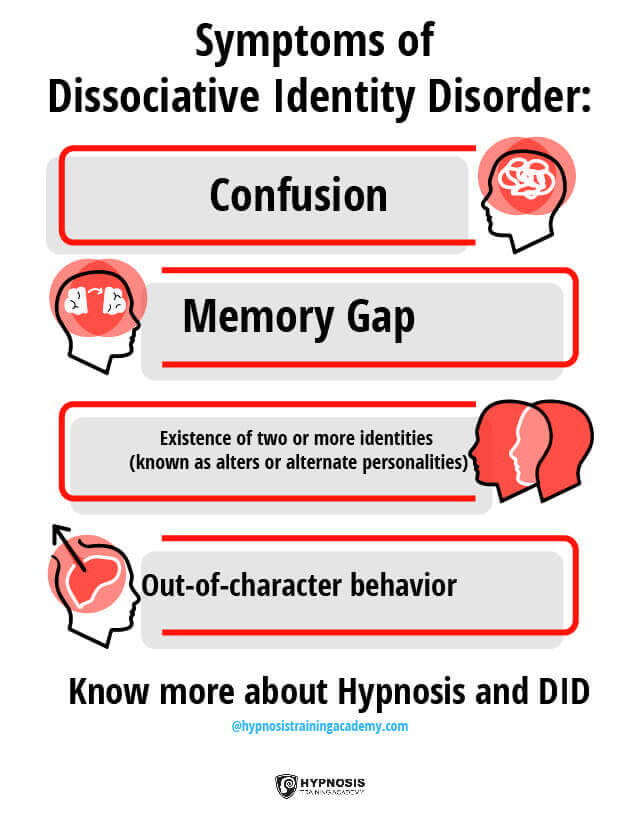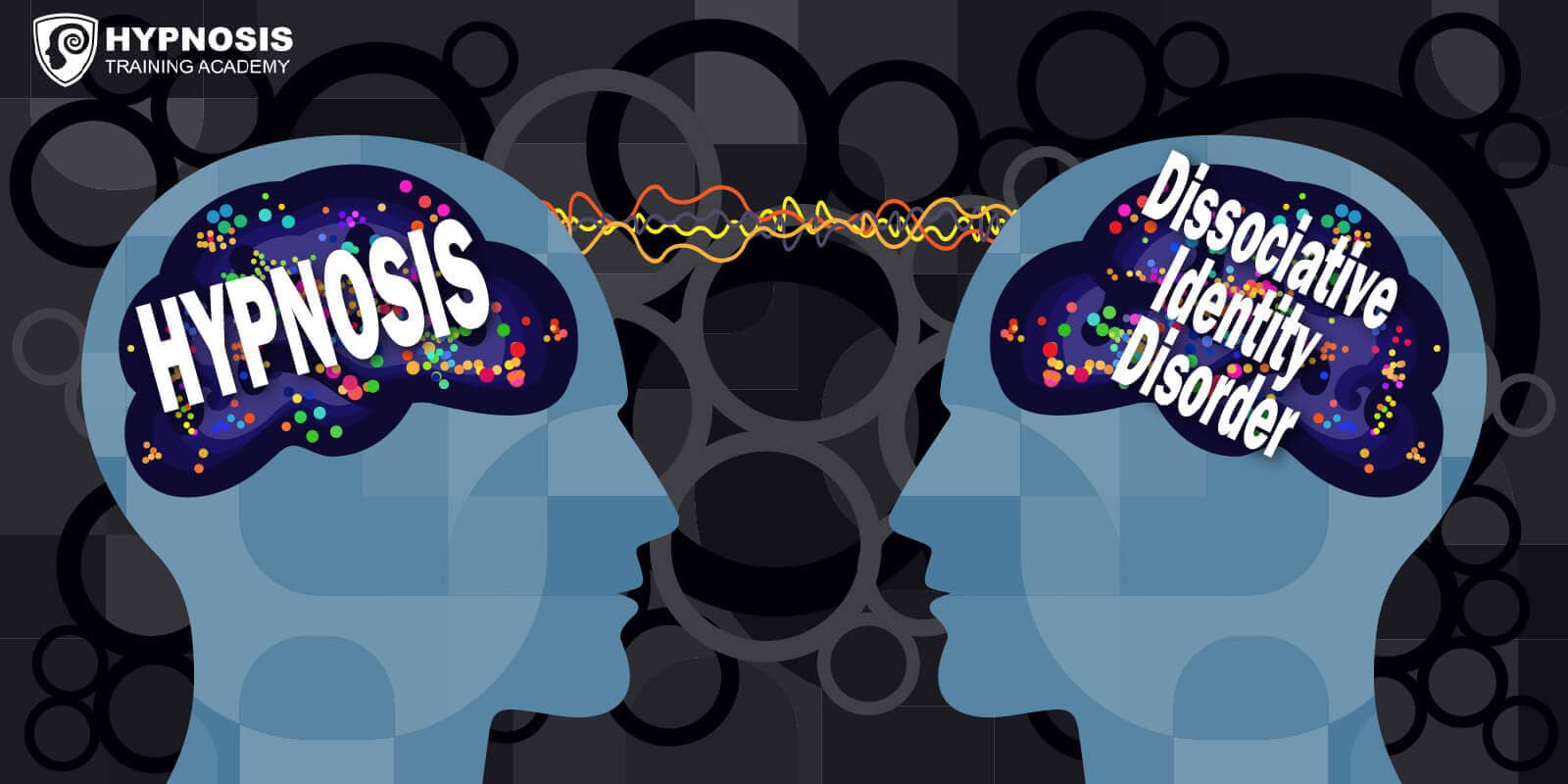In 1973, Flora Rheta Schreiber published her controversial book entitled Sybil.
It was the story of a woman who appeared to manifest sixteen different personalities.
The book is about Schreiber’s treatment of the woman for multiple personality disorder, known today as Dissociative Identity Disorder (DID).
There has been a lot of controversy surrounding the book as to whether or not the personalities were real or fabricated.
But whatever the truth might be, Schreiber’s book did help to pave the way for the treatment of DID.
Where hypnosis and dissociative identity disorder are concerned, however, there is a much older and more well-established link.
In fact, hypnosis has been used to treat dissociative disorders as far back as the early 19th century.
Not only that, but there is an extensive amount of literature to back it up.
This article will look at some of the literature a bit later on.
For now, though, it makes sense to find out more about what DID is and how someone suffering from it might be affected.
What Is DID & How Does It Affect Patients’ Lives And Relationships?
American filmmaker M. Night Shyamalan released the film Split in 2017. Starring James McAvoy, it’s the story of a man with 24 different personalities struggling to be heard.
The title refers to the character’s split personalities, and although it’s a complete work of fiction, it nevertheless helps provide some understanding of the condition.
According to psychiatry.org, DID is associated with traumatic events or abuse that occurred sometime in childhood.
It refers to the presence of two or more distinct identities (or personalities). Each identity has its own behaviors, memories and ways of thinking.
This out-of-character behavior is the result of different personalities being temporarily dominant and in control.
The symptoms can be distressing and can seriously impact a person’s social and work life. This is partly due to the fact that the identity shifts happen involuntarily.
One minute you’re a middle-aged man of average height and build, the next a small child, the next a female, and the next a muscle-bound he-man type.
While these separate personalities might feel or appear very different, they’re all just manifestations of a single person.
So just how common is DID among the general population? As a rule, the condition affects people who have experienced some form of repetitive trauma during childhood.
According to the folks at psychiatry.org, nearly 90% of DID sufferers in Canada, Europe and the United States were victims of severe childhood abuse.
Symptoms can range from mild to severe, and self-harm is not uncommon. In fact, research shows that nearly 70% of DID outpatients have attempted suicide.
Sybil has been made into two movies for TV, and as entertaining as they might be, it’s important to remember that DID is a serious disorder that impacts not only individuals but also their family, friends and colleagues.
It’s also worth noting that with the proper treatment, DID sufferers can lead a productive and fulfilling life. So what kind of treatment should you be looking for?
Hypnosis And Dissociative Identity Disorder: Recent Studies On The Uses Of Hypnotherapy
A study titled Hypnosis in the Treatment of Dissociative Identity Disorder and Allied States: An Overview and Case Study
states that the “first successful treatment” of a subject with DID involved hypnosis and was implemented by Antoine Despine in the 1830s.
That makes sense. Any treatment for DID typically involves therapy aimed at helping people regain control.
On the one hand, they need to try to integrate the different identities back into one person.
But that’s only half the battle. They also need to review and remember the traumatic events that caused the problem in the first place.
As luck would have it, hypnosis (or hypnotherapy) is the perfect tool to achieve these and other objectives.
According to an article in the Journal of Trauma & Dissociation, it makes sense to use hypnosis because:
- DID patients are generally more hypnotizable than others, meaning there’s a higher chance of success with hypnosis techniques
- Hypnosis has a proven track record for treating trauma-related conditions
- DID patients often use an uncontrolled and haphazard from of self-hypnosis, so teaching them to use self-hypnosis more appropriately can enable them to cope with their symptoms more effectively
The article goes on to point out that hypnosis is a bona fide way to deal with flashbacks, abreactions and traumatic memories. It can also be used to:
- Direct unsettled identities to “safe” places
- Put identities to sleep between sessions
- Encourage identities to communicate constructively with each other
- Promote identity integration
Therapists talk about 3 phases when dealing with DID patients.
Phase 1 involves the use of self-hypnosis to encourage relaxation, getting them to imagine a safe place, and offering them ego-strengthening suggestions.
In Phase 2, subjects are asked to see their memories play out on a screen, so they can assess the memory objectively.
Regression techniques are also used to help subjects access the memory in the first place.
Phase 3 is where the reintegration takes place, where subjects are asked to rehearse possible future scenarios in an attempt to avoid a relapse.
In these later phases, subjects can be taught to visualize an internal meeting place where the various identities can come together and solve problems.
You might recognize many of these techniques as being part of the 3 R’s associated with the Ledochowski Protocol, which are:
1. Revivify – reliving a memory with all the emotions you felt at the time, but being aware that you’re actually in the present
2. Regress – going back to a time in the past so that you believe you are actually there, the same age and time as when the experience originally happened
3. Reintegrate – bringing the resources from the past into the present so they can help the subject move forward in a more positive way
These phases also have their counterparts in some of the typical hypnosis techniques you might be familiar with.
Uses Of Hypnosis With Dissociative Identity Disorder
How does hypnosis fit as a potential treatment for DID? To find out, you only have to look at some of the information above.
It’s a well-known fact that every hypnosis induction starts off by getting the subject relaxed. That can be done via the hypnotist or by using self-hypnosis.
Part of the session might also include the two Boiler Plates, employed as bookends at either side of the induction.
Boiler Plate 1 has the following elements:
- Sounds arounds you – an instruction not to be distracted by any sounds the subject might hear but to instead go even deeper into trance
- My voice follows you – an instruction for them to stay connected with the hypnotist’s voice so as not to wander off into their own fantasy world
- Sanctuary – an instruction to feel the chair beneath them and know that they are safe, no matter what else might be going on
Boiler Plate 2 includes these features:
- Ease of re-introduction – an instruction to go into trance more quickly during the next session, making the hypnotist’s job a bit easier
- Self-esteem – telling the subject what a great person they are in order to boost their self-image
- Post-hypnotic praise – telling the subject how well they did so they realize they were under hypnosis and will hopefully go under more easily next time
You would normally use these Boiler Plates as part of a longer technique, such as regression. You can find more information about the complete 12-Step Regression Method by reading this advanced guide to mastering hypnotic regression therapy.
For problem solving, there’s the PCAT Formula. Here’s a quick summary of how that works:
- P for Problem & Parameters – identify the problem. Just talking about it stimulates the unconscious mind to start searching for solutions.
- C for Bypass the Critical Conscious Mind – the idea is to interrupt thinking patterns so the subject looks at the problem from a new perspective. It might be done using Mind Bending Language or the Non-Awareness Set, for example.
- A for Access Resources – accessing the unconscious mind where memories & creativity are stored. This makes it possible to tap into the subject’s own resources and use them to manage the problem. Dynamic Mental Imagery (DMI) is a powerful technique for achieving this.
- T for Transform – once you know the problem and have found those inner resources, it’s time to take action. The problem has already been partially transformed by this stage and now the subject just needs to stay focused on taking positive steps.
Hypnosis & DID: What The Future Holds
It goes without saying that DID is a complex condition and a mental health issue. In order to treat a sufferer, you need to be adequately trained.
Even with the appropriate training, you must have two things before you can begin:
1. The subject’s consent
2. A medical referral
It’s important to note that there is some controversy surrounding the use of hypnosis with DID patients. Because they are highly hypnotizable, reports suggest that this makes it easy to create false memories.
This is an example of iatrogenesis, a term that refers to causing harm through diagnosis, intervention, error or negligence.
However, other research shows that these patients are prone to fantasy and often confuse this with reality even when hypnosis is not employed.
The effects of hypnosis with dissociative identity disorder are unclear at times. One way to avoid anything untoward happening is to limit the use of leading questions or suggestions that might distort the subject’s hypnosis experience.
Other therapies have also proven successful with DID, such as psychotherapy and Cognitive Behavioral Therapy (CBT).
But there is plenty of evidence that shows hypnosis has a significant role to play in the treatment of the condition.
It’s likely, then, that hypnosis will be used in conjunction with other therapies to treat DID in the future.
Conclusion & Key Takeaways
Hypnosis was used to treat dissociative identity disorder (DID) back in the early 19th century.
The condition received mainstream attention in 1973 with the publication of Flora Rheta Schreiber’s book Sybil.
DID refers to a mental illness in which the subject displays multiple personalities. Some of the other symptoms include:
- Confusion
- Memory gaps
- Out-of-character behavior
These symptoms can cause distress and can seriously impact someone’s work and social life.
It’s thought that as many as 90% of DID sufferers experienced some sort of repetitive childhood abuse or trauma.
If the distress gets too hard to bear, it can lead to depression, self-harm or even suicide.
With the proper treatment, however, it’s possible to lead a productive and fulfilling life.
Hypnosis is a powerful tool to help manage DID, partly because it has such a long and successful track record for dealing with trauma.
DID patients are also very hypnotizable, so that makes it more likely that hypnosis will get excellent results.
Therapists use a 3-phase approach to deal with DID patients, and those phases match many of the more familiar hypnosis techniques.
Generally speaking, the aim is to revivify, regress, and reintegrate the subject, helping them identify the trigger for the trauma so they can look at the problem in a more objective way.
Some of the standard hypnosis techniques you might use include the 12-Step Regression Method and the PCAT Formula.
And while other techniques are also available, it’s clear that hypnosis has a significant role to play in the treatment of DID in the future.
The post Hypnosis And Dissociative Identity Disorder: What Recent Studies Say appeared first on Hypnosis Training Academy.
Source: Hypnosis Training Academy






Leave A Comment
You must be logged in to post a comment.